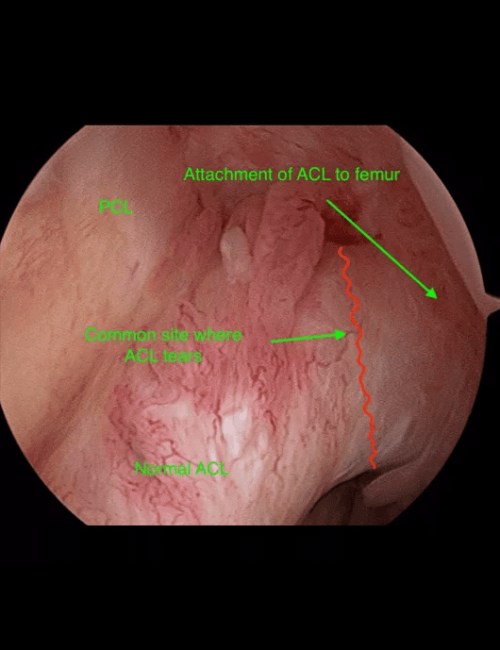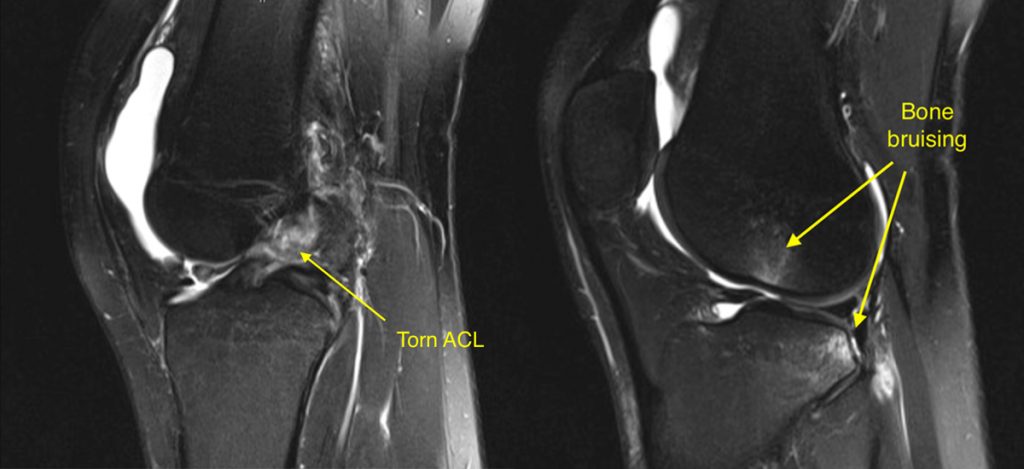ACL TEARS
The anterior cruciate ligament (ACL) is one of the four essential ligaments of the knee. It connects the tibia to the femur in a region called the intercondylar notch.
The primary function of the ACL is to prevent the tibia from moving forward on the femur. Large forces pass through the knee in certain activities. These activities include sudden stopping, sudden change of direction, and jumping and landing on one leg. If these forces exceed the strength of the ACL, then the ligament may rupture.
SPORT AND YOUR ACL
Many sports are “at-risk” of tearing the ACL. These sports include Australia’s most popular games, Australian Rules football and netball. They also include other sports that involve running, twisting and jumping such as soccer, rugby and basketball. Snow skiing is also an activity that puts the ACL “at-risk”. The ACL can also be torn in other sports and also in non-sporting activities. Even though football is a contact sport, most injuries do not involve contact. A collision will result in more extensive damage involving other structures.

ACL tears are prevalent. They are a significant injury, and some patients may require surgery. Dr Brown will use minimally invasive surgery to speed recovery and allow you to get back to full activity, as soon as possible.
Call us on (03) 5223 3151 Book an appointment today.
ACL INJURY SYMPTOMS
When the ACL tears, the person may report that their knee gave way or even dislocated. There is often quite intense pain that may settle down relatively quickly. About two-thirds of people hear or feel their knee “pop” or “crack” or even a series of “pops”. Most people cannot walk or bear weight after. Also, the knee swells either immediately or within a few hours. This acute swelling is due to bleeding into the knee joint.
ASSOCIATED KNEE INJURIES
As well as the injury to the ACL, injuries to other structures in the knee are relatively common. About a third of people also tear one or both meniscus. Depending on the direction of force, other ligaments can be damaged, typically the MCL (medial collateral ligament). MRI also demonstrates severe bone bruising. Also, the articular cartilage of the knee can be damaged or even break off.

ACL INJURIES IN YOUNGER PATIENTS
We now see more ACL tears in children and adolescents. The reasons for this are not clear but are several factors are thought to be responsible. An ACL reconstruction in a younger person is associated with some special considerations. As children or adolescents are growing, they have open growth plates. “Growth plates” are a unique structure that occurs at each end of the long bones, which allow for growth of that bone. Drilling of the tunnels would typically pass through the plates. Therefore special consideration of these growth plates needs to occur. People under the age of 18 also have a higher rate of re-injury of their ACL graft. For this reason, graft selection is essential, and often the quadriceps tendon is used instead of the hamstrings. Sometimes the ACL graft needs to be reinforced by what is called a lateral extra-articular tenodesis (LEAT).

